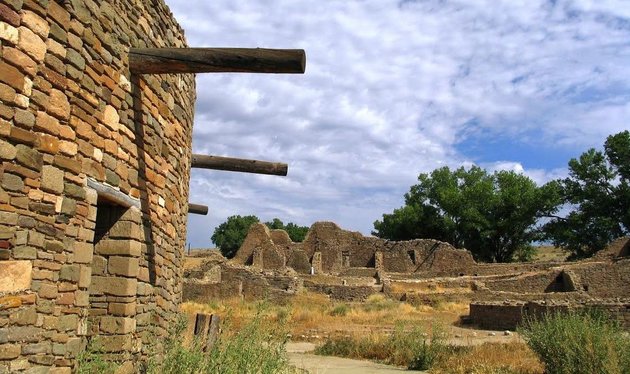Experience the Unesco World Heritage Aztec Ruins
Aztec has a fascinating attraction that you will want to explore immediately

Among the many astonishing things that can be enjoyed and explored in the American Southwest is the Aztec Ruins National Monument.
This major Ancestral Puebloan ruins development is more than 1,000 years old and dates back to the 12th century. The location is central to the City of Aztec. This 27-acre site is located near the banks of the Animas River. Its historical, cultural and physical significance is so great that in 1987 it was designated with the prestigious title as a UNESCO World Heritage Site by the United Nations Educational, Scientific and Cultural Organization.
Presently, the United States has only 23 UNESCO Sites, among which include the Grand Canyon, Yellowstone National Park, Carlsbad Caverns National Park and the Statue of Liberty.
The Ruins were primarily constructed using stone and mortar. Wood needed for the design and construction was carried in from as far away as 20 miles away and includes pine, spruce, fir, and aspen tree trunks. The Ruins consist of an integrated network of massive masonry and living spaces. The main West Ruins covers two acres and once stood three stories high. The excavation indicates the development contained approximately 500 rooms averaging 10 by 12 feet. A key design element that dominates the site is the Great Kiva.
This was an important enclosed chamber that served as the core of the community. It was likely used for ceremonies, social interaction and council.
Aztec's one-of-a-kind attraction
The Aztec Ruins is unique because it has the largest reconstructed “Great Kiva” anywhere in the world. Evidence indicates the Ruin’s builders were closely related to the same ancestral people who built two other UNESCO World Heritage Sites.
The Chaco Culture National Historical Park is also situated in northwest New Mexico. The Mesa Verde National Park is located in southwest Colorado. Both of these archaeological wonders are within a short drive from Aztec.
For approximately 200 years, Aztec Ruins, Chaco Culture and Mesa Verde provided a vital “regional triangle” for ceremonies, trade and political activity. The peoples were linked by an elaborate system of carefully engineered and constructed roads, many of which can still be traced. It is a wonder the people achieved all of this despite the region’s incredibly harsh environment.
Ancestral Puebloans, whose descendants include the Hopi, Navajo and Pueblo people of northern New Mexico, reached their peak population around 1100 A.D. Approximately 200 years later the entire area was abandoned, possibly because of a 23-year drought that began in 1276, and/or due to continuous raids by enemy tribes.
The area was not used extensively again until the 1500s with the arrival of the hunting/gathering Navajo from the north. European explorers came upon the site in the summer of 1776 when Spanish friars Francisco Atanosio Dominquez and Francisco Velaz de Escalante were seeking a shorter overland route from Santa Fe to California.
Nearly 140 years later, famed archaeologist Earl Morris conducted excavation work of the ruins from 1916 to 1921. He unearthed and collected nearly 6,000 artifacts, the bulk of which are housed at the American Museum of Natural History. His effort laid the groundwork for the National Park Service’s restoration of the site that began in the 1930s.
Fun fact! Hollywood’s charismatic and dashing Indian Jones character, played by Harrison Ford in several Steven Spielberg blockbuster movies, is based on the real-life persona of Morris. In 1934 Morris returned to the Aztec Ruins to reconstruct the Great Kiva. His work in Aztec is commonly regarded as a major accomplishment that has helped millions of park visitors gain a firsthand understanding of the Ancestral Puebloan’s mysterious way of life. The Aztec Ruins became a national monument when President Warren G. Harding signed the legislative bill on Jan. 24, 1923.
For more, visit the Aztec Ruins website.






